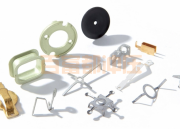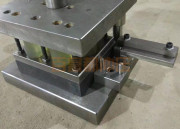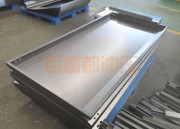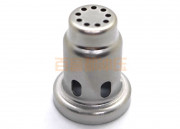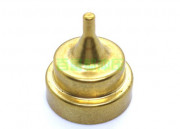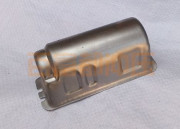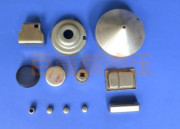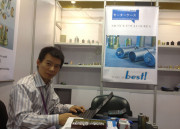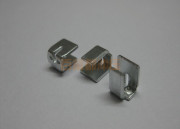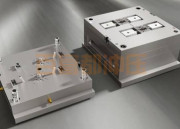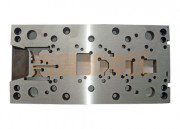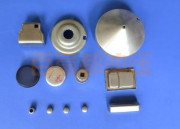Common Defects and Preventive Measures of Stainless Steel Drawing Die
The selection of suitable convex and concave die fillets for stainless steel wire drawing is closely related to the size and distribution of stress. If the radius of the fillet is large, the pressing area of the blank holder is insufficient, which will easily cause instability and wrinkling; if the fillet is too small, it increases the resistance of the material entering the die during deformation, making it difficult for the material to flow and transfer inward, thereby increasing the force transmission. area, which may cause cracking. Therefore, it is very important to choose a reasonable punch and concave die fillet radius. Under the effect of preventing cracks, the punch relative to the fillet radius rp/ is about 4. The degree of polar deformation of the die and punch will increase, and the relative fillet radius of the die will increase by 5mm~8mm, which helps prevent cracking.
4. Thin strip stretching is used for stainless steel stretching: previous testers have also confirmed that the thin strip stretching method can significantly reduce the maximum tangential residual stress of the stretched parts and effectively prevent longitudinal cracking. According to the degree of deformation and the thickness of the original plate, an appropriate thinning coefficient (usually 0.9t~0.95t) is selected. If the value is too small, the deformation stress of the deep-drawing part will increase sharply, resulting in the bottom cracking.
5. An intermediate annealing process is added to the deep drawing method for stainless steel drawing: after multiple deep drawing, an intermediate annealing process should be carried out, which can completely eliminate residual stress and restore the austenitic stainless steel structure. For high-strength steels, it is generally necessary to go through 1 to 2 stretching processes before moderate annealing. For example, 1Crl8Ni9Ti is usually heated at 1150~1170℃, heated for 30min, and then cooled in airflow or water. Moreover, whether it is the heat treatment between processes or the final heat treatment of the finished product, it should be carried out as soon as possible after stretching to avoid deformation or cracking of the workpiece due to internal stress due to long-term storage. However, both annealing and post-cleaning annealing increase product cycle time, which affects surface quality.
6. Use suitable lubricants for stainless steel drawing: using suitable lubricants has a significant effect on stainless steel deep drawing. The lubricant can form a film with certain toughness and ductility between the convex and concave dies, which is beneficial to the stretch forming of stainless steel. Due to the large deformation of stainless steel deep-drawing parts and the difficulty of forming, polyvinyl fluoride film can be used as a lubricant in actual production. PTFE membrane has good tear resistance, certain toughness and ductility, and is easy to clean. After coating the dry film, in the stretching process, the dry film can be deformed together with the blank, and can always separate the blank from the mold, and the film itself has a certain porosity and a large number of fiber cracks, so it can be stored in a certain amount. of lubricating oil.
The above-mentioned common defects and preventive measures of stainless steel drawing die, in the actual production process, the drawing die is prone to strain, and to solve this problem, the adhesive wear should be reduced by changing the characteristics of the contact pair. I hope the above can be helpful to readers.
Read More →


